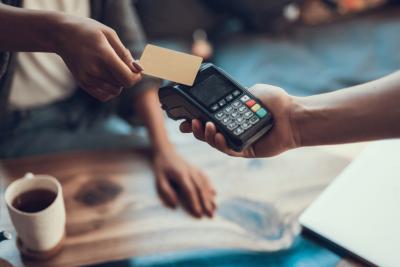Our Educate A Child International Fixed Term Deposit empowers education for marginalised and vulnerable children.


The threat from internet fraudsters is continually evolving. The best way to tackle these threats is to ensure you are always aware of them and how they work.
Authorised push payment fraud (APP Fraud) is a crime which affects both businesses and individuals.
90% of UK APP Fraud is committed through digital channels. Additionally, 93% of fraudulently obtained transfers are sent over a Faster Payments network which means banks have little time to intervene and prevent the criminal from moving the funds*. The best way to protect yourself from APP fraud is to learn about it, so that if you are targeted you will recognise it and know what to do.
What is APP fraud?
Authorised push payment (APP) fraud, also known as a bank transfer scam, occurs when you are tricked into transferring money from your own bank account to one belonging to a scammer.
Scammers use sophisticated technology and manipulative social engineering to trick you into thinking they are someone else. They can send text messages which appear to be from your bank and appear in the same thread as genuine messages, phone you from what appears to be your bank’s phone number or hack into the emails of a company that you trust and send you an invoice with the scammer’s account details.
An example of APP fraud would be a scammer pretending to be from your bank and asking you to move your money to a ‘safe account’, but it is actually an account the scammer controls. Scammers may have hacked communications meaning that they know when you are expecting to pay something and will be least likely to scrutinise a request for payment. They will monitor email threads between consumers and businesses to look for payment dates and details, then use the information they have gathered in order to ask for a transaction to be made at a time when the victim may expect a payment request to hit their inbox. Completion day on a property purchase, for example.
How to avoid APP fraud
If anyone asks you for payment or to move your money, question it. Contact the company directly and ask them to confirm not just the request for payment, but the payment account details. Always telephone to do this, even if the request was made by phone call. Scammers can mask their phone number with the number of a genuine organisation when they call you and they may be able to hack and intercept your emails, so telephoning a company directly is the safest way to confirm the request and payment account details are correct.
If you are requested to make a payment (even if it is one you are expecting) via email, making a small payment first and then contacting the intended recipient to confirm that they got it before transferring the rest can help protect your money. It may be inconvenient to make two payments instead of one, but it could keep your finances safe and keep you from falling victim to APP fraud.
Never feel pressured to hide details about a payment from your bank. Scammers have manipulated victims into giving false responses to security questions so that the scam would go undetected. Please remember that bank security questions are for the safety of you and your money. The police or any other trusted organisation would never advise you to lie to your bank about why you are transferring money. Never rush a payment, as a genuine organisation will understand and be patient.
What to do if you are a victim of APP fraud
Whether you've been the victim of fraud, or you're looking to learn more about avoiding it, we are committed to keeping you and your accounts as safe as possible.

Learn more about the threat from viruses and trojans

Identity theft is a risk that we all face.

Social media is creating new opportunities for fraudsters.

Learn about the risks.

As online shopping increases, so do fraudsters' attempts to scam.

Fraudsters use different techniques to steal your card details.

Find out more about how criminals use 'money mules' and protect yourself from becoming a victim.

APP fraud is a crime which affects businesses and individuals